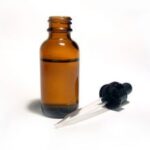The Omega 3, 6 and 9 groups of fatty acids all contain essential fatty acids necessary for good health. The difference between them lies in the position of the first double bond from the methyl end or the Omega end of the carbon chain.
Out of the three, Omega 3 is the most important fatty acid. Omega 3 family has two fatty acids EPA and DHA that are in limited supply and only found in any real quantities in oily fish and fish oil supplements. Although DHA is important for pregnant and nursing mothers and for young children for healthy development of the brain and vision, EPA can be considered the most important for everyone else as it is necessary for the efficient functioning of the brain and the body at a cellular level.
Omega 3, 6, & 9 advantages
The Omega 3’s has anti-inflammatory and anti-coagulant properties as well as many other important health benefits. They reduce inflammation and can provide protection against cardiovascular disease, arthritis, skin conditions, depression and other mood-related disorders.
Omega 3 and Omega 6 interact with each other so the balance between them is crucial for good health.
Omega 9 is not an essential fatty acid. Omega 9 oils are monounsaturated, and are found in olive oil. Your body can also make Omega 9.
Parents and Omegas confusion
Parents need not look specifically for so-called “children’s omega 3 supplements” to get their kids the best product.
A label is merely a label — often just used for marketing purposes to appeal to a niche, in order to drum up sales.
Now let’s talk about its importance for children:
Omega 3 fatty acids are vitally important for our diets, and most of us in the Western world are deficient in these nutrients.
The reason children’s omega 3 supplements are in especially high demand is because toddlers and kids are still growing. Because the brain vitally requires copious amounts of omega 3 fatty acids in its developmental stage, and because many kids are lacking in omega 3’s — just like us adults — concerned parents are trying to give their children the best start to life possible.
The best omega 3 source is fish oil. Infants under one year old receive their omega-3s through mother’s milk. Flax seed is a plant source but not the best. The reason is because in plant sources like flax seed, the omega 3 comes in Alpha linoleic Acid (ALA) form which must be converted by the body into the other two crucial omega 3 fatty acids, called DHA and EPA. This conversion does not always happen efficiently, which means getting DHA and EPA directly from fish oils is the best bet.
How important is Omega 3?
Just how important are DHA and EPA? Well, almost 60% of the brain’s mass is fats, and half of those fats are DHA!
In short, DHA and EPA are crucial for optimal brain functioning and development. You must understand that not all fish species yield equally high amounts of omega 3 fatty acids — DHA and EPA. I personally prefer Carlson’s Fish oil. However, if you pick a good omega 3 it will work for adults as well, children. Just lower the dose according to their requirement.
Now, it may be true your children are too young to swallow typical fish oil sized capsules. But, if such is the case, then you may simply cut gently into the fish oil capsule and then squeeze the contents into their meals, giving them their needed omega 3 fatty acids without need for swallowing capsules.
Daily Requirement
2-4 grams, which is the equivalent of 2,000mg to 4,000mg per day it is perfectly safe and perhaps even beneficial for infants.



